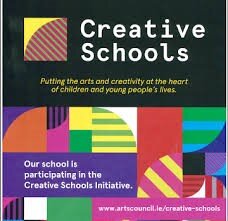History
Very little information remains on schools in the Ashford area in the 17th and 18th century. Most schools of that time were either Hedge Schools or Estate Schools. Hedge and Estate schools were for the lower classes, while a mixture of Tutors, Governesses and Boarding Schools on the whole educated the children of the upper classes.We do know that there was a school in Dunran Estate run by a Miss Baxter with 25 boy and girls in regular attendance from both Roman Catholic and Church of Ireland families in the area. Miss Baxter gave all her time to this work and refused to accept any compensation.Around 1857 the Schoolhouse was built in Kiliskey Village by public subscription. It had a fitful existence, being open and closed many times. Finally the building was sold to a Mr Robb when the school in Nun’s Cross was built.
Kilfea Schoolhouse was built in 1807 by Sir Francis Hutchinson Bart and can still be seen on the road from Ashford to Devils Glen. The building is situated opposite the entrance to the Glanmore Estate owned at that time by the Synge family.
The Synge family also had an estate school in their grounds called “The Pestalozzi School”. John Synge had met the Swiss Educationalist Johann Pestalozzi and was so taken by him that he made the introduction of his system of education his life’s work.
In Ashford village a school existed called “The Yellow House” it was a low thatched building on the Rathnew side of the village. In later years it became the Apothecary’s shop.
The Crofton Family of Inchinappa Estate were especially interested in the education of their tenants and built a school on their lands in Inchinappa. In 1821 in the 3rd report of the County Wicklow Education Society, it is recorded that at Inchinappa a school with 24 girls was in existence. The teacher was a Mr David Lindsay and under the heading of “State School” it was remarked that the building was in excellent condition and well furnished. In 1834 there is a record of the school then ran by Mr Laurence Egan, and supported principally by the Rev Crofton, who paid £30.00 per year to the master and gave the building, fuel, and books free of charge. The children paid 1d per week to 2s/6d per quarter. There were 30 boys and girls attending and they were taught reading, writing, arithmetic, grammar and scripture.
In 1875 the death took place of Marcia Anastasia Crofton. In her will she left a sum of money for the maintenance of a parish school in Kiliskey Parish. In October of that year the Select Vestry of Kiliskey sent a letter to the board of Commissioners of Charitable Bequests explaining the inconvenient location of the townland of Inchinappa in the Parish of Kiliskey and requesting that the bequest be extended to a more convenient location for the school. The Commissioners and the Crofton Family agreed and in 1877 a stonewall structure was built in Nun’s Cross on a site donated by Charles George Tottenham of Ballycurry Estate. In 1881 a red brick extension was added and the school became know as “The Crofton School”.
During the 1980’s the building was very inadequate for the number of pupils attending and still had only two outdoor toilets, one for the girls and one for the boys. A new site was bought further up the road and the old building was sold and is now a private residence.Canon Stanley Pettigrew headed a campaign to build a new school and Easter 1992 saw the opening of our current school by the Most Rev. Dr. Donald Caird, Archbishop of Dublin. An extensive history of the school is written by Mrs Bloomer.
MORE RECENTLY …
Since the new school was built on its current site, it has grown from having two classrooms to six. Two new classroom blocks were built in the last four years and one of these includes a multi-purpose room.
Nun’s Cross NS was originally established to educate the children of the Church of Ireland parish of Killiskey and surrounding parishes. Today it caters for children from various religious, ethnic and social backgrounds.










